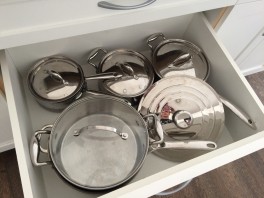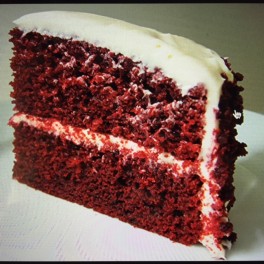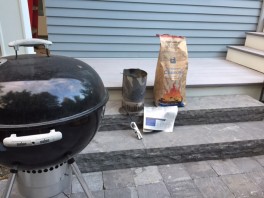
Finger Licking Goodness: Overcoming Your Fear of the Deep Fry
When it comes to my diet, I live by the 80/20 rule. That is, I try to make healthy choices 80 percent of the time. With the remaining 20 percent I allow myself to be free to eat (and drink) whatever I want. And that works well for my new cooking obsession: deep frying.
French fries, popcorn shrimp, zucchini flowers, cauliflower, samosas, chicken and fish (the deep fry is the key to my fish tacos); so many foods can be elevated with just the right amount of crispiness on the outside while locking in moist tenderness on the inside.
Deep frying was once a method I feared – given some of my kitchen mishaps over the years I was sure to start a fire – but as I’ve been practising with all sorts of dishes I’m learning all you need is a few gadgets and bit of knowhow and you’re good to go. (But of course its always wise to keep a fire extinguisher nearby!)
Tools
You don’t need to buy a deep fryer. All it does is take up extra cupboard space and I’m opposed to any large kitchen gadget that only has one function. A deep, heavy bottomed pot like a Dutch Oven is perfect, as it will maintain a steady temperature. Many people do like a wok for it’s concave shape, but since it has a thin bottom it might be harder to maintain the heat.
A good quality deep frying or candy thermometer is essential. If your oil is too cool food turns out mushy. If it’s too hot you’ve got a fire hazard on your hands. Most recipes call for frying at around 350-375 degrees F and it’s important to keep that temperature consistent.
A wire slotted spoon is excellent for getting food in and out of the pot. Long handled metal tongs are also sufficient. (Not plastic! I’ve made that mistake.)
Oil
Choose a neutral flavoured oil with a high smoke temperature. That means no olive oil. Peanut, canola, sunflower or safflower are all good choices. After cooking allow oil to cool completely before straining into a plastic container and storing in the fridge. You can reuse oil – although I don’t if I’ve cooked meat or fish – and you’ll know it’s time to toss it when the colour turns dark or it smells rancid.
One deterrent for for deep frying seven days a week is how to get rid of it. Check with your local municipality to see if there is a residential recycling program in place. Local restaurants will sometimes accept it as a public service (they’ll add it to their old oil when they recycle). Otherwise you can pour it into something absorbent like cat litter before disposing of it with your household waste. Do not pour it down the drain.
Technique
Turn on your stove exhaust to keep frying odours at bay.
Water is oil’s enemy. Adding water to hot oil can literally cause an explosion. Be sure to pat down all foods before adding to hot oil. And if you’re using a batter, allow excess to drip off before adding to pot. That splatter and pop that occurs is the result of water and hot oil mixing together.
Never salt before deep frying. Salt draws moisture to the surface. See above. Salt immediately after removing food from oil to give it the best chance to stick.
Allow food to come to room temperature before adding to hot oil. Adding cold food will cause the oil temperature to drop, which it will anyway even at room temperature, but you want to minimize this. And be sure to allow oil to return to the desired temperature between batches.
Deep frying is a fast cooking method. The outside of the food cooks almost instantly, forming a barrier around the food. The inside cooks by the steam that’s created. It only takes a few minutes to cook most foods by this method. Always wait for oil to reach the desired cooking temperature before adding food. The idea is to get it in and out of the oil as quickly as possible. This is how you create a light crunch without greasiness.
Cook food in batches to avoid crowding, sticking and uneven cooking.
When food is cooked remove it to a paper towel lined plate to soak up excess oil.
Fried food is best consumed hot so serve immediately. Your guests will be impressed you made the extra effort (which really didn’t take much effort at all.)










